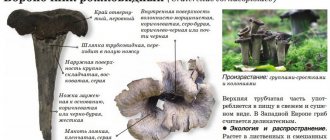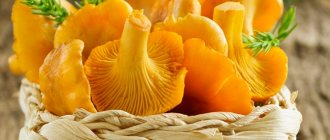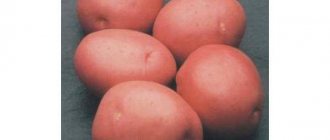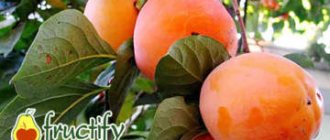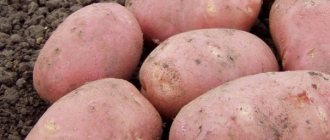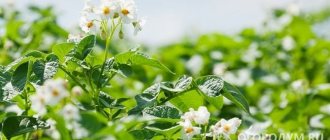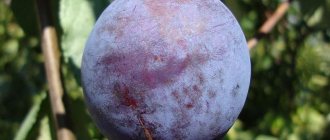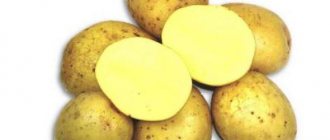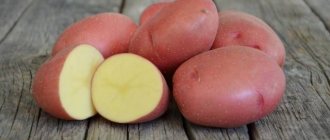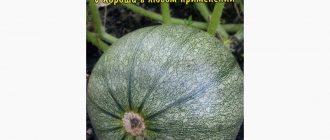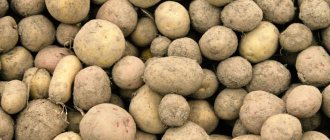General information about the mushroom
— Advertising —
Blackberry is a common name for a number of species of mushrooms that belong to different genera and families. They are united by the presence of a spiny hymenophore, so previously all hedgehogs belonged to the genus Hydnum, but now they are divided into the following families:
- Family Hedgehogs (Hydnaceae)
- Family Bankeraceae
- Family Hericiaceae
- Family Hyaloriaceae
Characteristics of the hedgehog mushroom
hat
The hedgehog's hat is matte cream. On its underside there are pointed, light-colored needles that break off easily. The diameter of the hedgehog cap is 3-12 cm, sometimes reaching 20 cm. The cap is hard, but brittle. A young mushroom has a convex shape, with age it opens up, becomes depressed and acquires a depression in the center. There are also hedgehogs with an irregularly shaped cap. The edge of the cap of the old mushroom is bent inward.
Pulp
— Advertising —
The young mushroom has a dense flesh with a pleasant smell. In mature mushrooms it becomes reddish.
Leg
The leg is up to 2.5 cm in diameter, about 6 cm long. The shape is cylindrical, the base is widened. The leg is one color, slightly lighter than the cap.
How to store blackberries
Fresh mushrooms, without refrigeration, can be stored for 2-3 hours. Refrigerate for up to 3 days. Before you send them for storage, there are a few things you need to do:
- Wash the mushrooms thoroughly and soak in salt water for several hours to remove pests.
- Dry, if damaged, remove them.
- Place in a deep container and cover with a napkin.
These mushrooms absorb foreign odors well, so they should be stored away from other foods. Blackberries should not be stored in plastic bags.
To preserve these mushrooms for a long time, housewives often salt them. You can also extend the shelf life by freezing the blackberries.
Another storage option is drying for the winter. Properly dried mushrooms can be stored for 2-3 years, and a large number of dishes can be prepared from them.
Edibility of the hedgehog
Hedgehog is a little-known mushroom that is classified as conditionally edible. Of its species, the yellow hedgehog is recommended as a very tasty mushroom, and the variegated hedgehog, as a conditionally edible one, is recommended to be collected only at a young age.
When cooked, the pulp of the blackberry loses almost no volume.
The structure of the pulp of these mushrooms is dense, with a characteristic sourness. Before using the mushroom in cooking, carefully remove all the spines from the underside of the cap.
Soups and side dishes are prepared from hedgehog mushrooms. These mushrooms are also dried. When fresh, hedgehog mushrooms are usually cooked together with other mushrooms.
Useful properties and restrictions on use
Like other mushrooms, blackberries have a rich composition of nutrients and beneficial substances that help provide antibacterial protection to the body (treating wounds against staphylococcus, destroying E. coli).
Good to know!
The presence of easily digestible proteins and amino acids contributes to the rapid growth of muscle mass and restoration of strength after heavy and prolonged physical activity. Having a beneficial effect on the nervous system, the mushroom improves sleep and helps fight depression and irritability. Micro- and macroelements present in the pulp can improve blood quality, remove toxins, speed up metabolism and improve lung function.
Blackberry is used in medicine in the manufacture of ointments for the treatment of skin lesions, cosmetic masks made from them perfectly moisturize and tone, tinctures and compresses are recommended for relieving inflammation and purulent processes.
Hedgehog mushrooms are not recommended for consumption by people diagnosed with gastritis, pancreatitis or liver disease. Rare individual intolerance occurs. It is better to refrain from eating dishes made from blackberries when the temperature rises, after undergoing operations. Mushrooms are strictly prohibited for pregnant women and children under 5 years of age.
Types of hedgehog mushroom
Yellow hedgehog (Hydnum repandum)
Edible mushroom.
The cap is 3-12 cm in diameter, fleshy, dry, dense, the surface is uneven, lumpy, irregular in shape. The young mushroom has a slightly convex cap, the edges are curved down, the surface is velvety; As the mushroom matures, it flattens, the middle becomes dented, and the edge becomes wavy. Often grows together with the caps of neighboring mushrooms. The color of the cap ranges from light ocher and pinkish-yellow to reddish-orange and light hazel; When pressed, it darkens, and in dry weather it becomes light. The pulp is dense, brittle, white or yellow, darkens when broken, has a pleasant, fruity smell. The old mushroom is hard and bitter. The leg is 3-5 cm long and 1.5-4 cm thick, dense, solid, cylindrical in shape, widened at the base. The surface is smooth, dry, white or yellow, darkening with age.
The mushroom grows in deciduous and coniferous forests and loves moss cover. It is found in temperate climate zones of Eurasia and North America, as well as in Siberia and the Far East.
Yellow hedgehog appears in early summer and grows until the first autumn frosts.
Reddish-yellow hedgehog (Hydnum rufescens)
Edible mushroom.
The cap is smooth, irregular in shape, reddish-orange in color. The edge is turned up. The bottom of the cap is covered with brittle spines. The leg is thick and dense. The pulp is dense in structure, fleshy, cream-colored, and turns orange when pressed.
The mushroom grows in mixed and coniferous forests in autumn.
Variegated hedgehog (Sarcodon imbricatus)
The cap is 5-10 cm in diameter, dry, hard. The shape is flat-convex, the old mushroom has a concave center; the edge is wavy. The top of the cap is covered with large scales that look like tiles. The color of the cap is brownish or grayish-brown, the scales are dark. A young mushroom has a velvety surface, while an old one has a smooth surface. The pulp is whitish in color, becoming dirty gray as it matures; in a young mushroom it is dense and juicy, in a mature one it is dry and hard. The aroma is spicy, the taste is bitter. The leg is dry, thick, cylindrical, widened downward; 2-5 cm long, 1-1.5 cm thick. The color of the leg is grayish, brown at the base.
Grows in dry coniferous forests, sometimes mixed, on sandy soils, singly and in groups.
Fruiting occurs from August to October.
Conditionally edible mushroom. Young mushrooms are pickled, pickled, dried, and used as a seasoning. Old mushrooms are not used for food.
Coral hedgehog (Hericium coralloides)
The fruiting body is similar to a coral branch, branched, white or pinkish in color. The pulp of the young mushroom is white, gradually turns yellow, the smell is not pronounced. Grows on the trunks and stumps of dead deciduous trees (aspen, elm, oak, birch).
Young mushrooms are considered edible, but they are not collected, as they are listed in the Red Book.
Comb hedgehog (Hericium erinaceus)
The fruit body is up to 20 cm, weighs about 1.5 kg, round or irregular in shape, from white to beige. The pulp is whitish, fleshy. When dry it turns yellow.
A rare species that grows on the trunks of still living or dead deciduous trees (oak, beech, birch) in the Amur Region, Khabarovsk Territory, Primorsky Territory, China, the Caucasus and Crimea.
The season lasts from early August to October.
Hericium cirrhatum
The fruit body is capped, white or pinkish, becoming yellow with age. The top of the cap is covered with spines or felt. The edge is fringed. The pulp is thick, soft, white or pinkish, and turns yellow when dry.
Only the young mushroom is edible.
The species grows in July-September in deciduous and mixed forests of the Northern Hemisphere.
False hedgehog, pseudohedgehog or pseudohydnum (Pseudohydnum)
The fruiting bodies are spoon-shaped, fan-shaped or tongue-shaped. The cap is up to 7.5 cm in diameter, thick, with a rolled edge. The cap is smooth or velvety on top, whitish, gray or brown, and darkens with age. On the underside there are soft short white or grayish spines. Leg up to 5 cm in length. The pulp is gelatinous, soft, translucent, the smell and taste are fresh, resinous.
A conditionally edible mushroom, it is rarely eaten.
Grows in groups or singly, on rotting stumps and trunks of coniferous trees, in Eurasia and North America, Australia.
How to cook blackberries
Blackberries are rarely used in cooking. Although the French value them very much, they prepare various dishes and consider them one of the best mushrooms.
Something to remember! Harmful substances can accumulate in fruiting bodies, so it is necessary to monitor where they are collected. Only those specimens that are collected in environmentally friendly places are eaten.
Here are some tips for preparing blackberries:
- before cooking it is necessary to remove the spines;
- some types should be boiled before continuing to cook to remove the bitterness from them;
- comb, coral and antennal species can be immediately salted or fried without boiling.
Frying
- Before frying mushrooms, you need to wash them and remove any remaining mycelium.
- If the fruits require boiling, then this procedure is carried out first.
- Mushrooms are cut and placed in a heated frying pan with oil.
- It is necessary to fry over low heat, and add the onion, cut into rings or half rings, when the mushrooms are soft.
- Add salt and cover if all the juice has evaporated.
- Mushrooms are considered ready when they are soft and dark and emit a pleasant aroma.
- You can make them softer and piquant by adding sour cream a couple of minutes before they are fully cooked.
Watch the video! Coral hedgehog. Cooking quickly
Cooking
- It is necessary to wash the mushrooms, remove excess debris and spines.
- Place the fruits in a saucepan of cold water and bring to a boil.
- Cook for 15-20 minutes.
- If you are making soup, it is better to add other types of mushrooms, since only blackberries will have a weak aroma.
White, yellow and comb blackberries are considered the most delicious. Although it is not very appreciated by mushroom pickers. Some people don't like to mess with spikes. It is important to cook only young specimens because older ones have bitter and hard flesh.
Growing hedgehog at home
Blackberry mycelium is sown from April to October in open areas. Fresh, wet logs of hard deciduous trees 10–20 cm in diameter and about 1 m in length are used as a wood base. Dry wood is soaked in water for 2–3 days. The impregnated wood is left for several days in a warm, ventilated room.
Holes 0.8 cm in diameter and 4 cm deep are made in the prepared log in a checkerboard pattern 10–15 cm apart. Mushroom sticks are inserted into them, after which the logs are wrapped in polyethylene, in which holes are made. The logs are left in a warm, shady place. They must remain moist at all times, so water them 2-3 times a week for 10-15 minutes.
When white mycelium threads appear on the surface of the logs, they are placed in cold water for a day, and then installed vertically in a bright room, greenhouse or on the site.
In late autumn, the logs are covered with dry leaves.
The first harvest is harvested 6-9 months after sowing.
Recipes and cooking features
Most often, hedgehog mushrooms are used in French cuisine. Main courses, soups, mousses, appetizers and side dishes, julienne, seasonings and sauces use the special sour taste and piquant aroma of these exotics. The property of hedgehog mushrooms not to change size and shape during heat treatment is often used for preparing them in batter and for salads.
Before preparing dishes from hedgehog mushrooms, the spines must be removed. Some varieties must be boiled to remove the peculiar bitterness. But combed blackberries, tendrils and antlers can be fried and salted without cooking.
Preparing mushrooms for cooking
Blackberries are fried in the same way as chanterelles or honey mushrooms; you can stew them in sour cream and with vegetables. Clear soups and cream soups are excellent in taste and nutrition. Particularly appreciated is the gravy made from boiled fruits to improve the taste of eggs, all kinds of cereals, side dishes and salads.
To prepare it, 300 grams of mushrooms, 3 tablespoons of butter and flour, one and a half glasses of milk, 2 yolks, 1 glass of mushroom broth and salt to taste are enough. You can add a little spice, but it is better to refrain from doing so so as not to drown out the mushroom aroma.
Dish with blackberry
Preparing the gravy is quite simple: prepare the so-called white sauce (flour is fried in butter, milk is added to it, when the mass begins to thicken, broth and yolks are added) At the end of cooking, the mass is mixed with chopped mushrooms, and everything is boiled for about 15 minutes.

